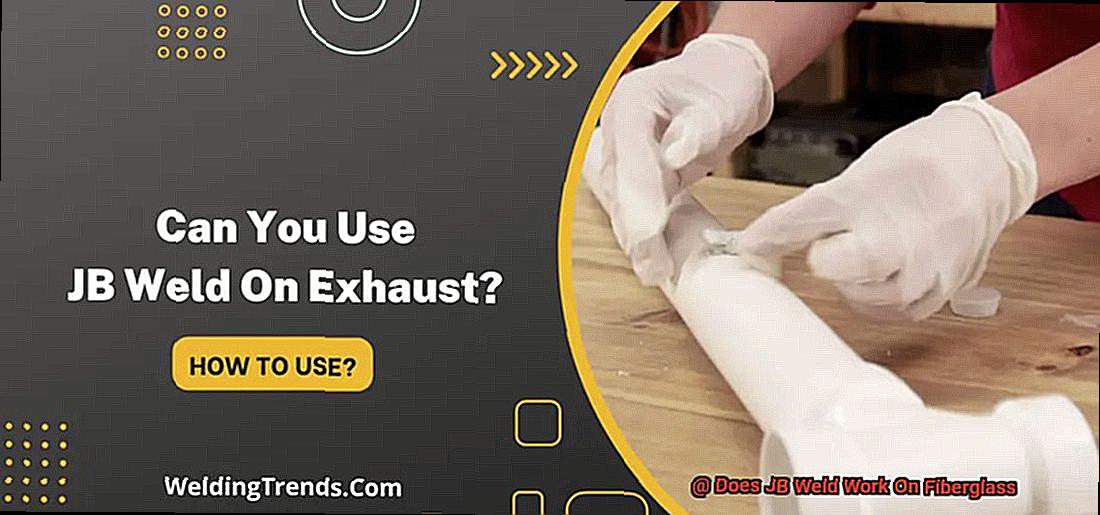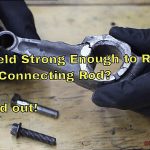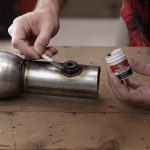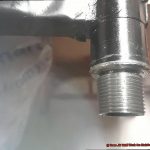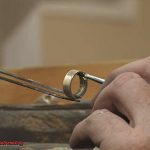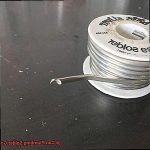Do you have a broken fiberglass item that needs fixing, but you’re unsure which product to use? With so many options on the market, it can be overwhelming. But fear not, as one of the most popular options is JB Weld – a two-part epoxy adhesive with a reputation for fixing almost anything. The question is, does JB Weld work on fiberglass?
The answer is a resounding yes. In this blog post, we’ll delve into just how well this wonder adhesive works on fiberglass. We’ll explore the steps you need to follow to use JB Weld on fiberglass and compare its benefits and drawbacks to other repair options.
JB Weld isn’t just any old brand; it’s a trusted one that offers long-lasting solutions for repairing fiberglass. Usually, repairing fiberglass requires specialized expertise and costly repair shop visits. However, using JB Weld makes it feasible for anyone to fix their broken items without breaking the bank.
By understanding the process and weighing up the pros and cons of using JB Weld on fiberglass repairs, you’ll feel empowered to handle small fixes independently. And what’s more satisfying than that?
Let’s dive in.
Advantages of Using JB Weld on Fiberglass
Contents
- 1 Advantages of Using JB Weld on Fiberglass
- 2 Disadvantages of Using JB Weld on Fiberglass
- 3 Preparation for Using JB Weld on Fiberglass
- 4 Application Techniques for Using JB Weld on Fiberglass
- 5 Different Types of JB Weld Suitable for Use on Fiberglass
- 6 When Not to Use JB Weld on Fiberglass
- 7 Conclusion
To begin with, JB Weld creates a strong and durable bond between two surfaces. It fills in gaps or cracks in the fiberglass, resulting in a long-lasting repair that will stand the test of time.
In addition to its strength, JB Weld is also waterproof. This makes it an excellent choice for repairing fiberglass on boats or other watercraft, where protection against moisture is essential. By adding JB Weld to the mix, you’re giving your repair an extra level of protection against water damage.
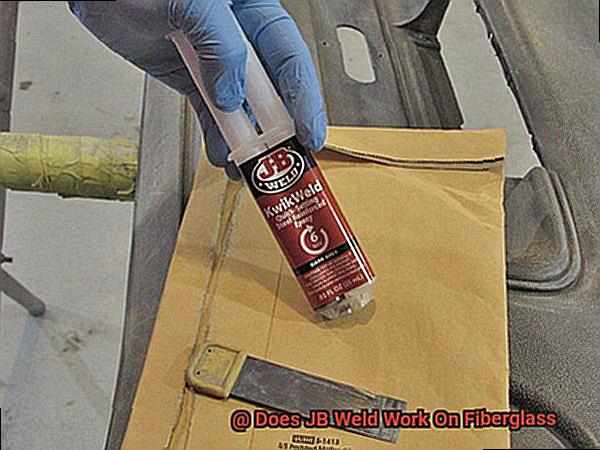
Another benefit of using JB Weld on fiberglass is its ability to withstand high temperatures. With the ability to handle temperatures up to 500 degrees Fahrenheit, it’s perfect for repairs in automotive or industrial settings. So if you’re looking to fix an exhaust system or other high-heat application, JB Weld is up to the task.
Last but not least, JB Weld is incredibly easy to use and apply. Its two-part system requires mixing before application, but once mixed, it can be applied directly to the fiberglass surface with a brush or spatula. The adhesive sets quickly and cures within 24 hours, so you can get back to using your fiberglass item in no time.
JB Weld has numerous advantages when it comes to repairing fiberglass. Its strength, waterproofing ability, heat resistance, and ease of use make it a versatile solution for many applications.
Disadvantages of Using JB Weld on Fiberglass
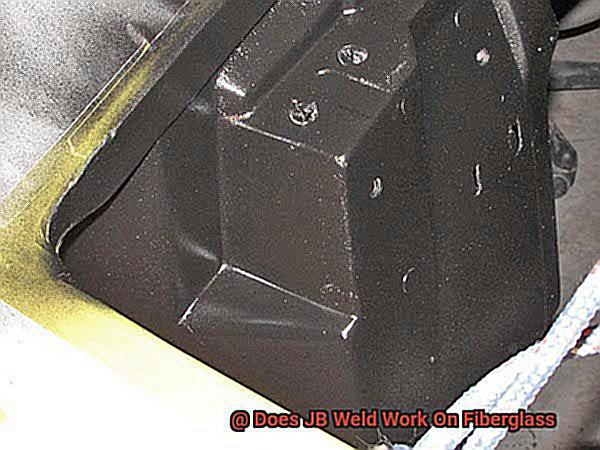
If you’re looking to repair your fiberglass with JB Weld, it’s important to know that this quick fix solution also comes with some drawbacks.
One major disadvantage is that JB Weld is inflexible once it dries. This means that if the repaired fiberglass flexes or expands due to temperature changes or movement, stress cracks may appear in the area. This inflexibility can be a real issue for boats and watercraft, which are constantly exposed to changing temperatures and movements.
Another potential problem is that JB Weld may not bond well with certain types of fiberglass. For instance, if the fiberglass has a gel coat or wax on it, the JB Weld may not adhere properly. Moreover, if the surface of the fiberglass isn’t properly cleaned and prepped before applying the JB Weld, it may not bond well or could even peel off over time.
Another disadvantage of using JB Weld on fiberglass is that it can be tough to sand and shape once it dries. Achieving a smooth and seamless repair can be challenging, especially if the area being repaired is curved or irregularly shaped.
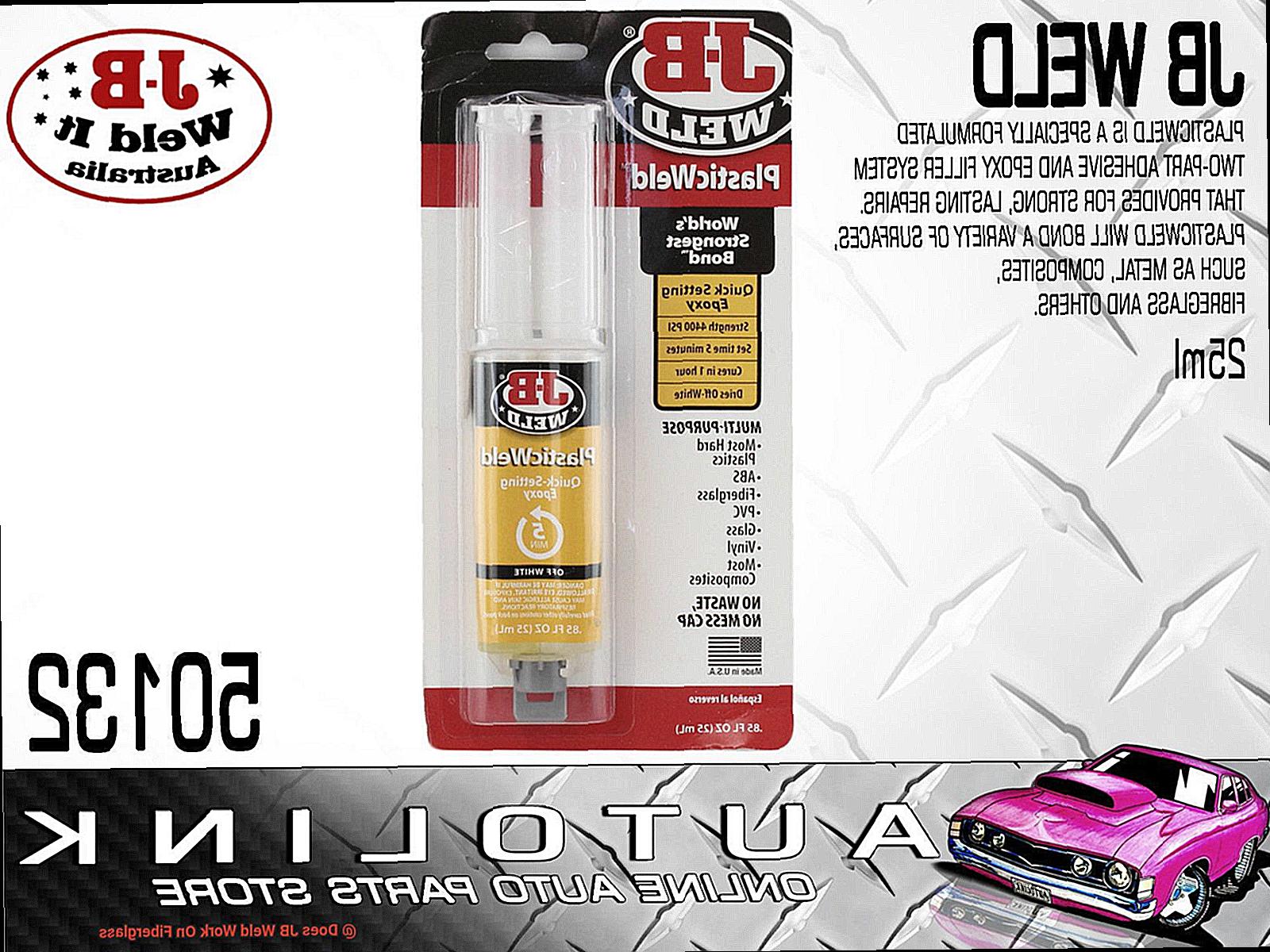
Lastly, JB Weld may not be the best option for repairing large areas of fiberglass damage. Because it hardens quickly, it can be difficult to apply evenly over a large area before it sets. Using too much JB Weld in one area can also create heat buildup and cause the fiberglass to warp or distort.
While JB Weld is a convenient option for small repairs on fiberglass, it’s essential to keep these potential disadvantages in mind before using it as a go-to solution for larger or more complex repairs. Proper preparation and application techniques can help minimize these issues. However, choosing the right adhesive specifically designed for your repair needs is critical to achieving a successful and long-lasting repair.
Preparation for Using JB Weld on Fiberglass
It’s essential to prepare the surface properly to ensure a strong and long-lasting bond. Fear not, we have compiled some easy-to-follow steps for you to achieve a successful repair.
Step 1: Clean the Surface
Firstly, clean the surface thoroughly with soap and water. This will remove any dirt, dust, or debris that can interfere with the adhesion of JB Weld. A clean surface is key.
Step 2: Sand the Surface
Next, lightly sand the surface with fine-grit sandpaper. This will create a rough surface for better adhesion. Be careful not to sand too aggressively as you may damage the fiberglass. A gentle touch is needed here.
Step 3: Fill Any Cracks or Holes
If there are any cracks or holes in the fiberglass, it’s vital to fill them in before applying JB Weld. You can use fiberglass resin or filler to repair any damage. Remember that a smooth surface will lead to better results.
Step 4: Apply JB Weld
Once the surface is clean and smooth, it’s time to apply JB Weld. Mix the two components (resin and hardener) thoroughly according to the instructions on the package. Apply the mixture with a putty knife or spatula, making sure to spread it evenly over the surface. Don’t forget that less is more when it comes to applying JB Weld.
Step 5: Allow JB Weld to Cure
After applying JB Weld, allow it to cure completely according to the package instructions. This usually takes between 4 and 6 hours, depending on temperature and humidity. Be patient here; it’s worth it.
Step 6: Sand the Surface Again
Once cured, lightly sand the surface again to smooth out any rough spots and prepare it for painting or other finishing work. You’re almost there.
By following these steps, you can ensure that your JB Weld repair will be strong and long-lasting. Proper preparation is key to achieving a successful repair that will stand up to wear and tear for years to come.
Application Techniques for Using JB Weld on Fiberglass
JB Weld is a reliable solution for repairing fiberglass, but proper application techniques are necessary for a strong and long-lasting bond.
Begin by thoroughly cleaning the surface of the fiberglass, removing any dirt or debris. Then, roughen up the surface using sandpaper or a wire brush to create a better bonding surface for the JB Weld. Mix the JB Weld according to instructions, ensuring that both components are fully combined.
Next, apply the JB Weld in a thin layer using a putty knife or similar tool. Be sure to apply enough pressure to ensure that the JB Weld fully bonds with the fiberglass. Allow it to dry completely before handling or sanding. Depending on the specific product used and environmental conditions, drying can take anywhere from 4-24 hours.
Once fully cured, you can sand down the surface if needed to create a smooth finish. However, be careful not to sand too much and weaken the bond between the JB Weld and fiberglass.
Different Types of JB Weld Suitable for Use on Fiberglass
We know that repairing fiberglass can be a daunting task, but fear not. With the right type of JB Weld, you can bond that fiberglass like a pro. However, not all JB Weld products are equal when it comes to bonding fiberglass. In this section, we’ll explore the different types of JB Weld that are best suited for fiberglass repair.
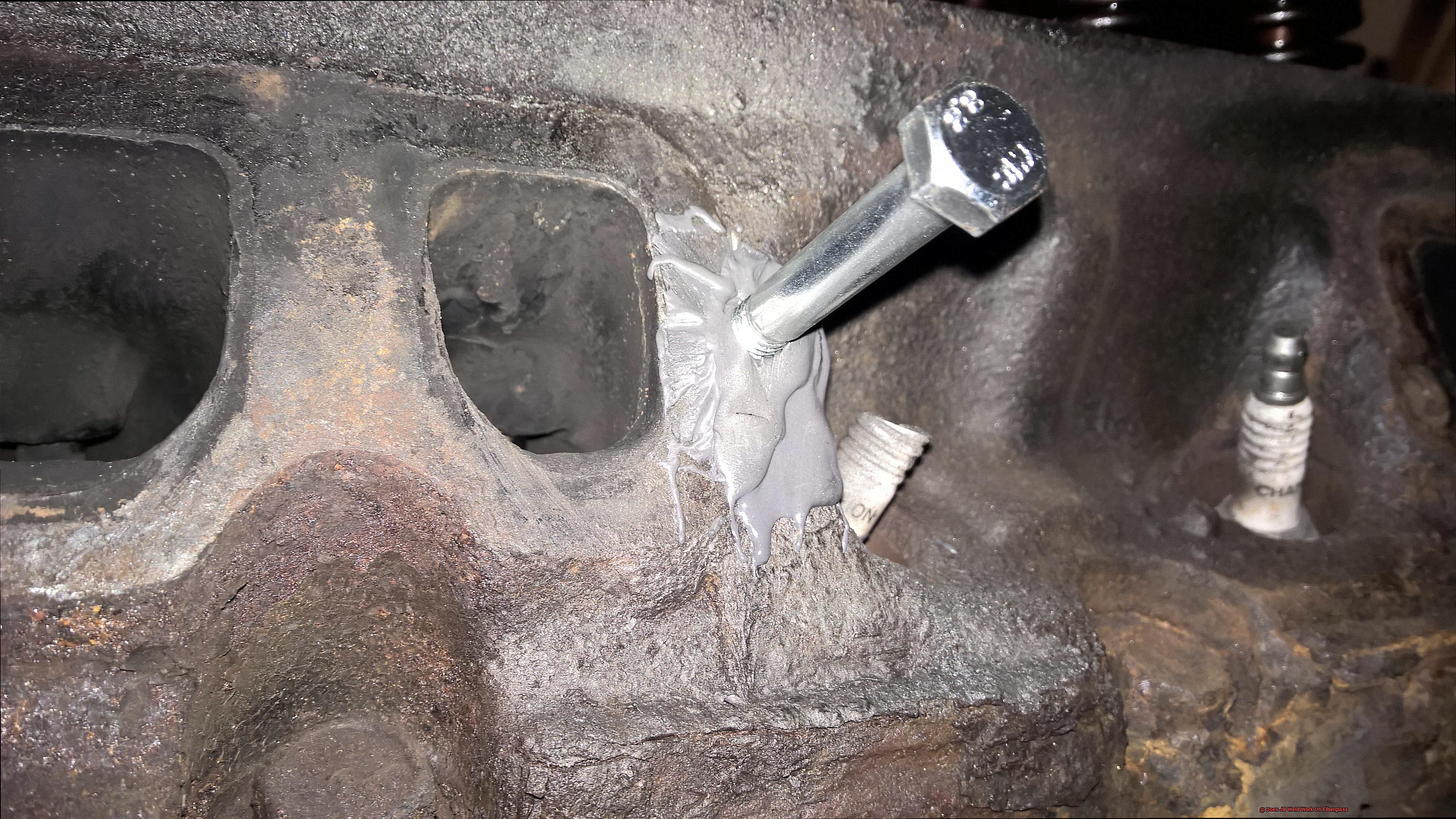
First up is the tried and true Original JB Weld – a two-part epoxy that can bond a wide range of materials, including fiberglass. This type of JB Weld has impressive bond strength and can withstand high temperatures. So whether you’re working on a hot tub or a car part made of fiberglass, Original JB Weld has got you covered.
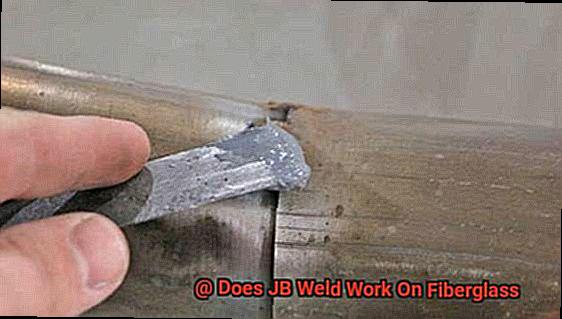
If you’re looking for a fast-setting adhesive that bonds quickly and with high strength, look no further than JB Weld KwikWeld. This versatile epoxy can be used on various materials, including metal, plastic, ceramic, and of course, fiberglass. With its 6-minute setting time, you’ll be able to fix your fiberglass in no time.
For those dealing with plastics and flexible fiberglass elements such as boat hulls, JB Weld PlasticWeld is the ideal choice. This epoxy is specifically designed for bonding plastics and has high bond strength for both rigid and flexible plastics. Rest assured that PlasticWeld will provide a strong hold for your flexible fiberglass repairs.
If you’re in need of a specialized epoxy for marine applications, consider JB Weld MarineWeld. Tailored specifically for repairing boats made of fiberglass, MarineWeld provides a robust bond that can handle harsh marine environments and keep your vessel seaworthy.
Remember that choosing the right type of JB Weld is key to achieving a strong and long-lasting bond between the adhesive and fiberglass.
Before applying any type of JB Weld to your fiberglass surface, make sure to clean it thoroughly and lightly sand it to create a rough surface for better adhesion.
When Not to Use JB Weld on Fiberglass
When it comes to repairing fiberglass surfaces, JB Weld can be a lifesaver. However, there are certain scenarios when it’s not advisable to use this versatile product. Here are a few examples to keep in mind:
- Firstly, if the damage is extensive or severe, JB Weld may not be able to handle the weight and stress of the material. In such cases, it’s best to leave the repair to the professionals. Trying to fix the issue with JB Weld in these situations could lead to further damage.
- Secondly, if the surface is wet or damp, the adhesive properties of JB Weld can be compromised resulting in an incomplete or weak bond. It’s crucial to dry the surface thoroughly before applying JB Weld. A damp surface could cause the adhesive to lose its grip and fail prematurely.
- Thirdly, if the fiberglass is exposed to extreme temperatures, it may not be suitable for JB Weld. The adhesive can become brittle and break down under such conditions, leading to a weakened bond that may not hold up over time. In other words, if you’re dealing with a repair in an area that is exposed to high heat or cold temperatures, JB Weld might not be your best option.
- Finally, if the fiberglass comes into contact with chemicals or acidic substances, it’s best to avoid using JB Weld. These materials can cause corrosion or other damage to the fiberglass which can compromise the effectiveness of the repair. If you’re working with fiberglass in an area where there could be exposure to chemicals or acid, consider alternative repair methods.
In conclusion, while JB Weld can be an excellent solution for repairing minor fiberglass damage, it’s essential to understand its limitations. For more substantial repairs or situations where there’s exposure to moisture, extreme temperatures or chemicals, it’s best to seek professional help or consider alternative repair methods.
wXPpIEoTDmA” >
Conclusion
To wrap up, JB Weld can be a game-changer for fixing your fiberglass items. This two-part epoxy adhesive is known for its ability to create a robust and long-lasting bond between surfaces, making it an ideal solution for minor fiberglass damage. What’s more, it’s waterproof and can withstand high temperatures, making it perfect for repairs in automotive or industrial settings.
But like any product, JB Weld has its limitations. It may not work well with certain types of fiberglass or may not be the best choice for repairing significant areas of damage. Plus, once it dries, JB Weld becomes inflexible and challenging to sand and shape.
That said, don’t let these limitations deter you from using JB Weld. With proper preparation techniques and application methods, you can tackle small fixes independently. Just remember to choose the right type of JB Weld that suits your repair needs.
So, by weighing up the pros and cons of using JB Weld on your fiberglass repairs and understanding the process involved, you’ll feel confident enough to take on minor fixes yourself. However, if the damage is extensive or severe or if there’s exposure to moisture, extreme temperatures or chemicals involved in the repair area, seeking professional help or alternative repair methods might be the way to go.
